Abstract
Twenty-seven patients in cardiopulmonary arrest had simultaneous measurements of arterial and central venous blood gases during cardiopulmonary resuscitation (CPR) with a pneumatic chest comparison and ventilation device. Mean central venous and arterial hydrogen ion concentrations, PCO2 and calculated bicarbonate concentrations were significantly different (P less than 0.01) at all sampling times (0, 10 and 20 min). Central venous blood samples predominantly showed a respiratory acidosis in contrast to a mixed disturbance in arterial samples inclined towards a metabolic acidosis. The mean difference between central venous PCO2 (pcv CO2) and arterial PCO2 (pa CO2) ranged from 5.18 to 5.83 kPa reflecting the low blood flow in patients undergoing CPR. Measurement of arterial Po2 indicated adequate oxygenation using the pneumatic device. Arterial blood gas analysis alone does not reflect tissue acid base status. Bicarbonate administration during CPR may have adverse effects and any decision as to its use should be based on central venous blood gas estimations.
Full text
PDF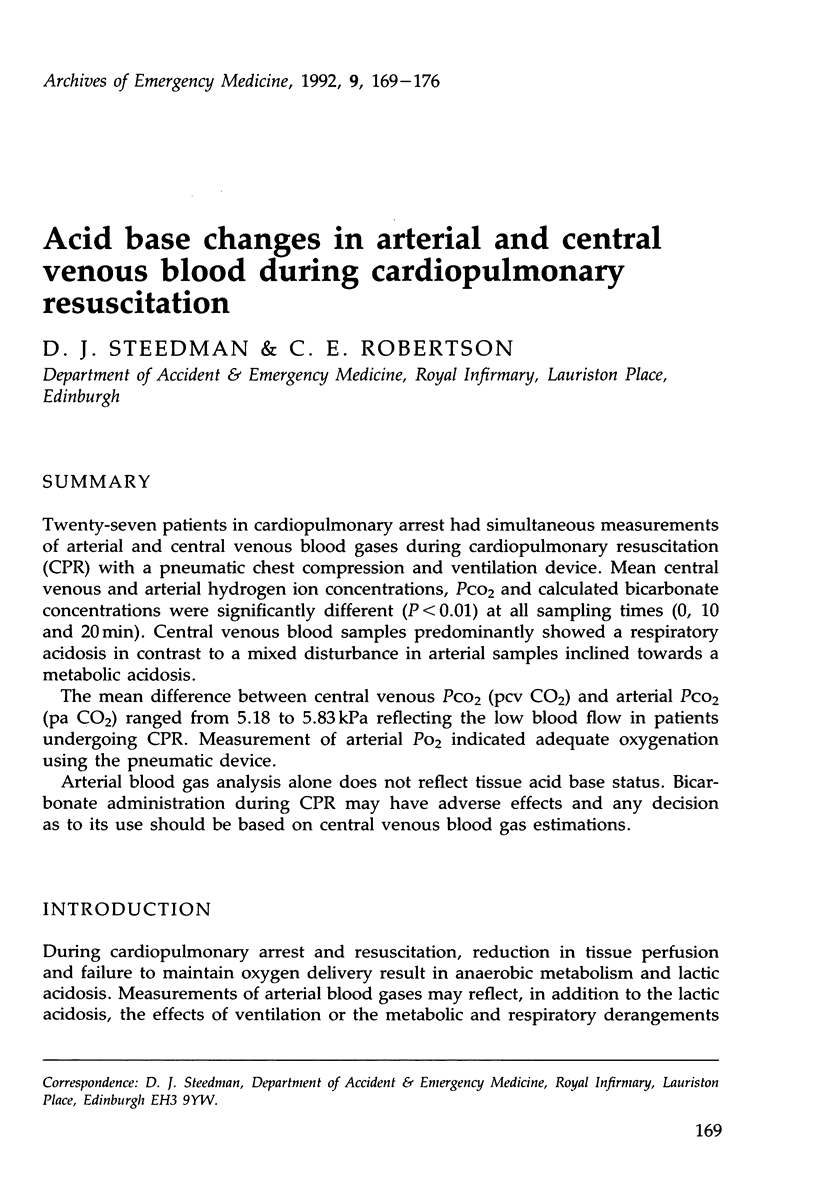
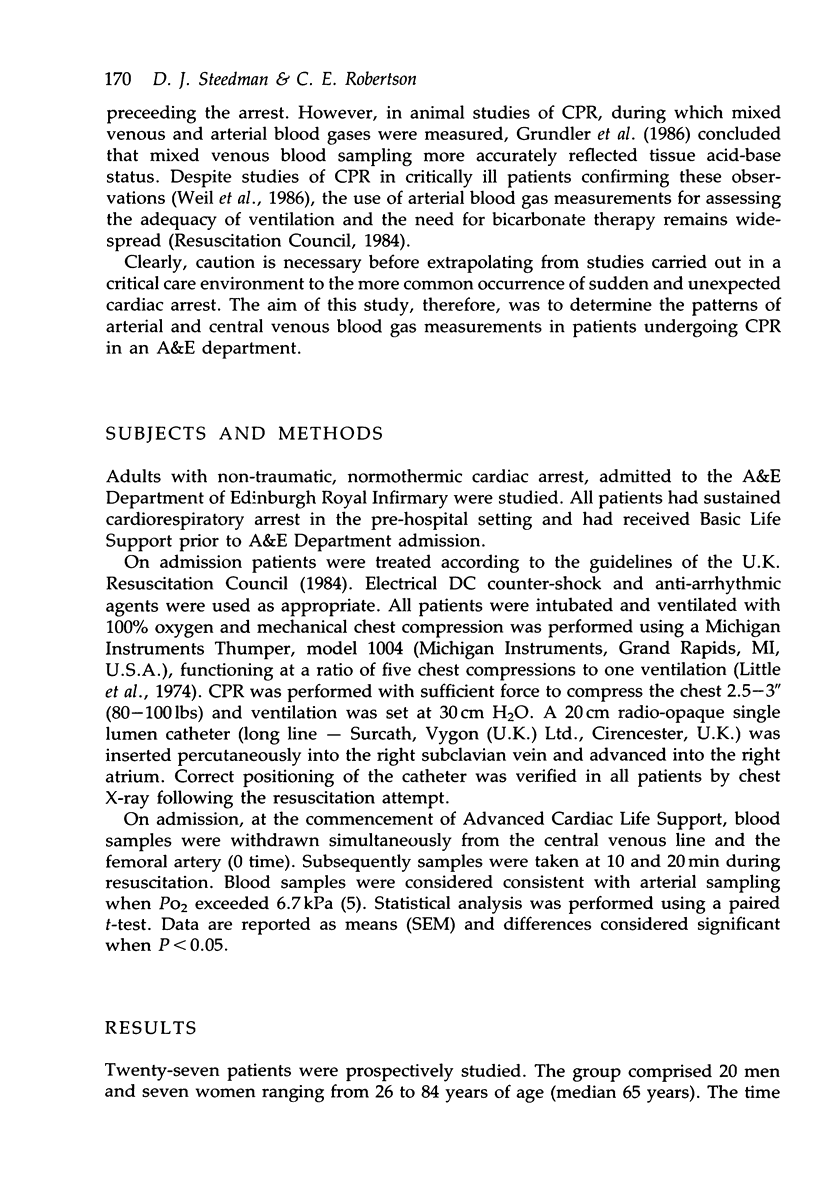
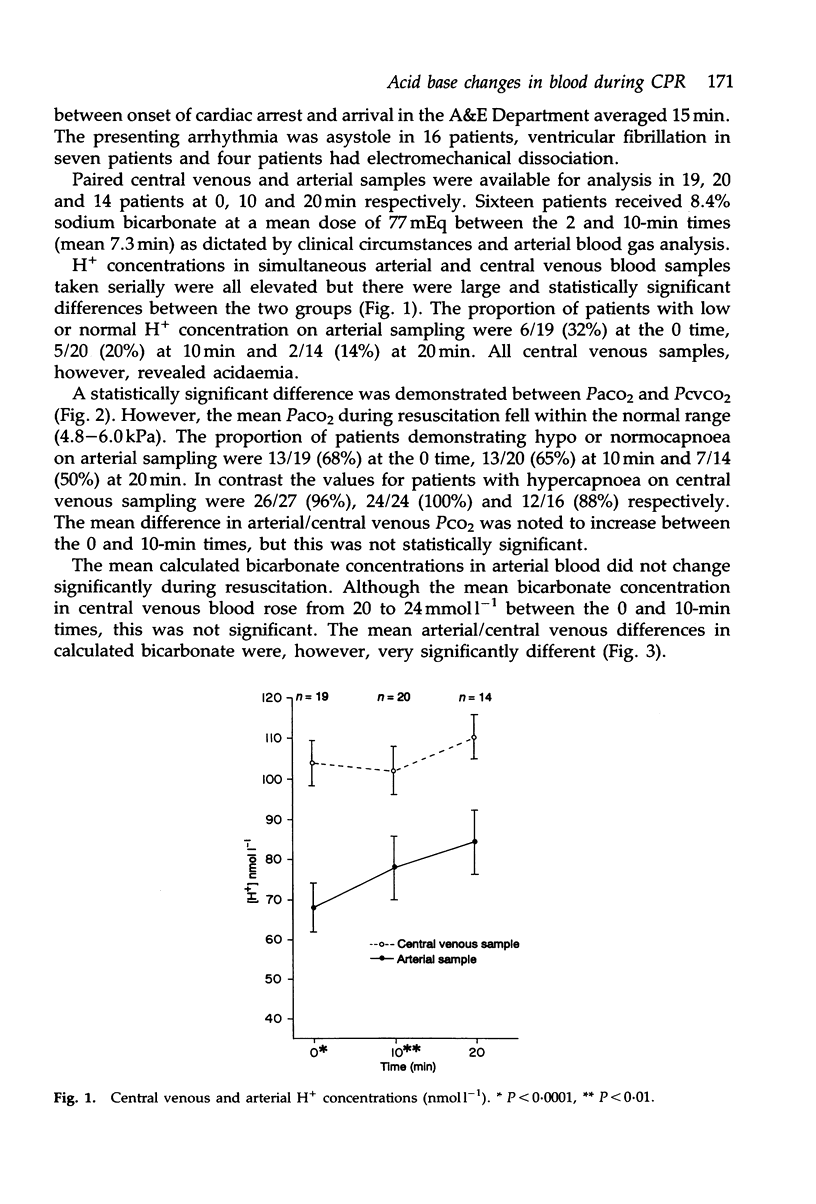
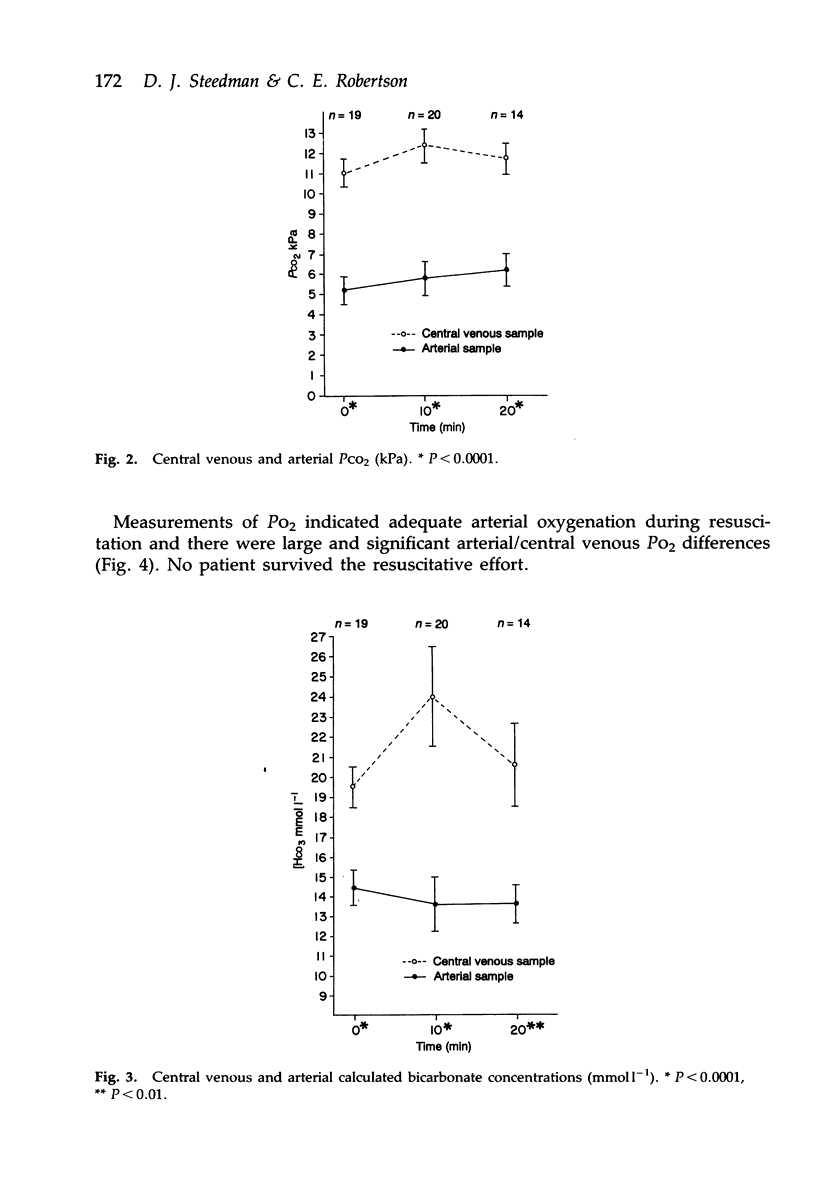
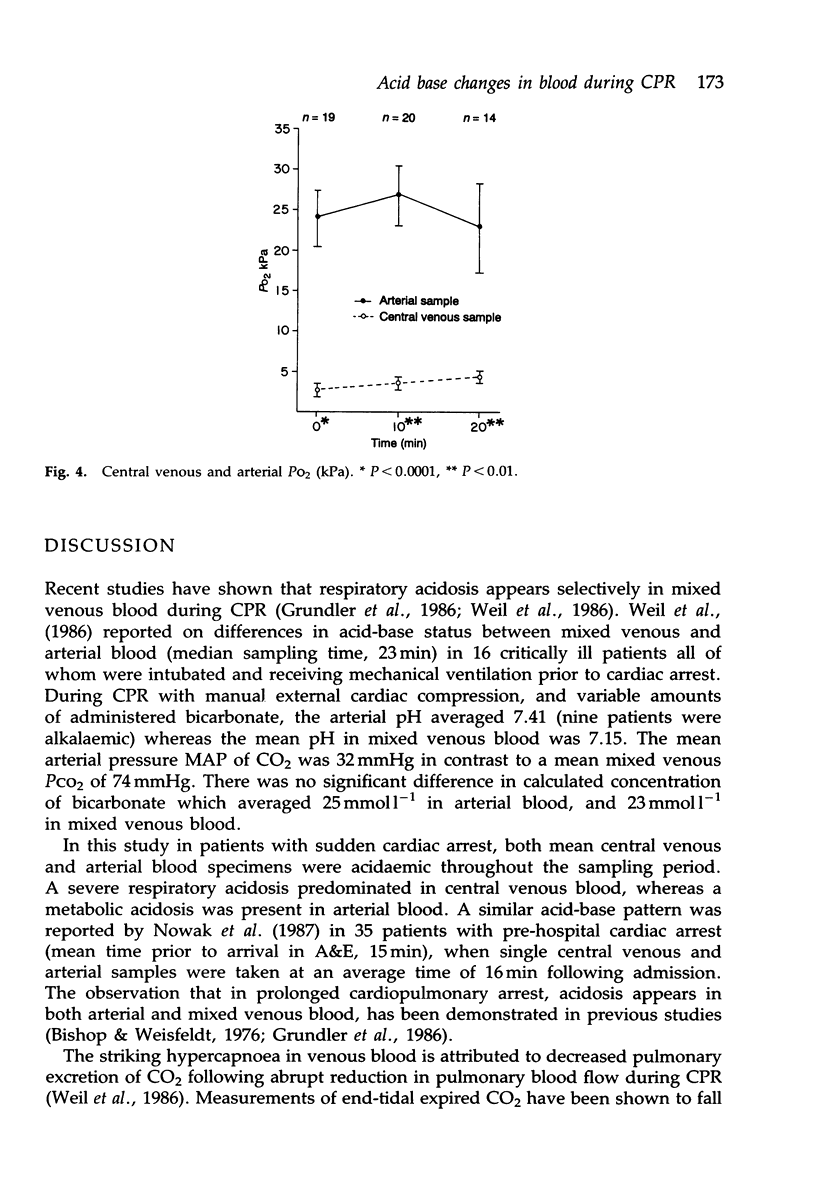
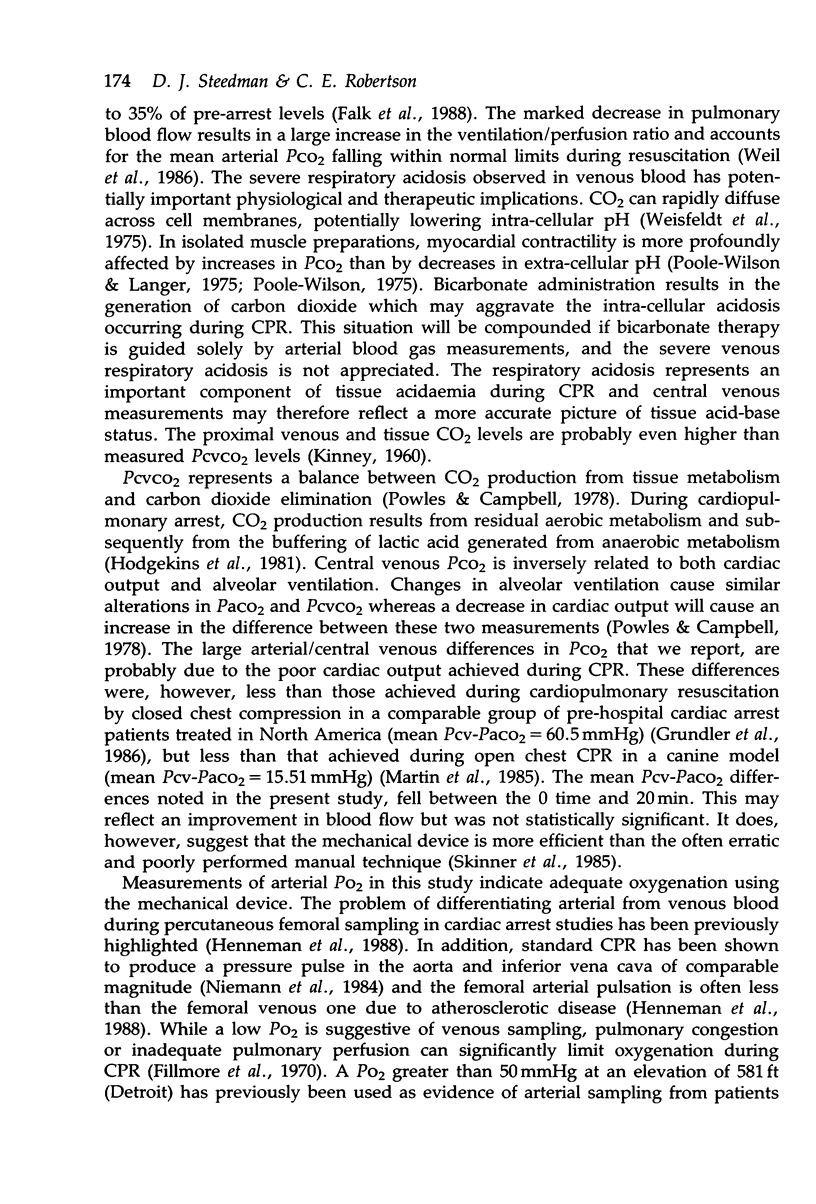
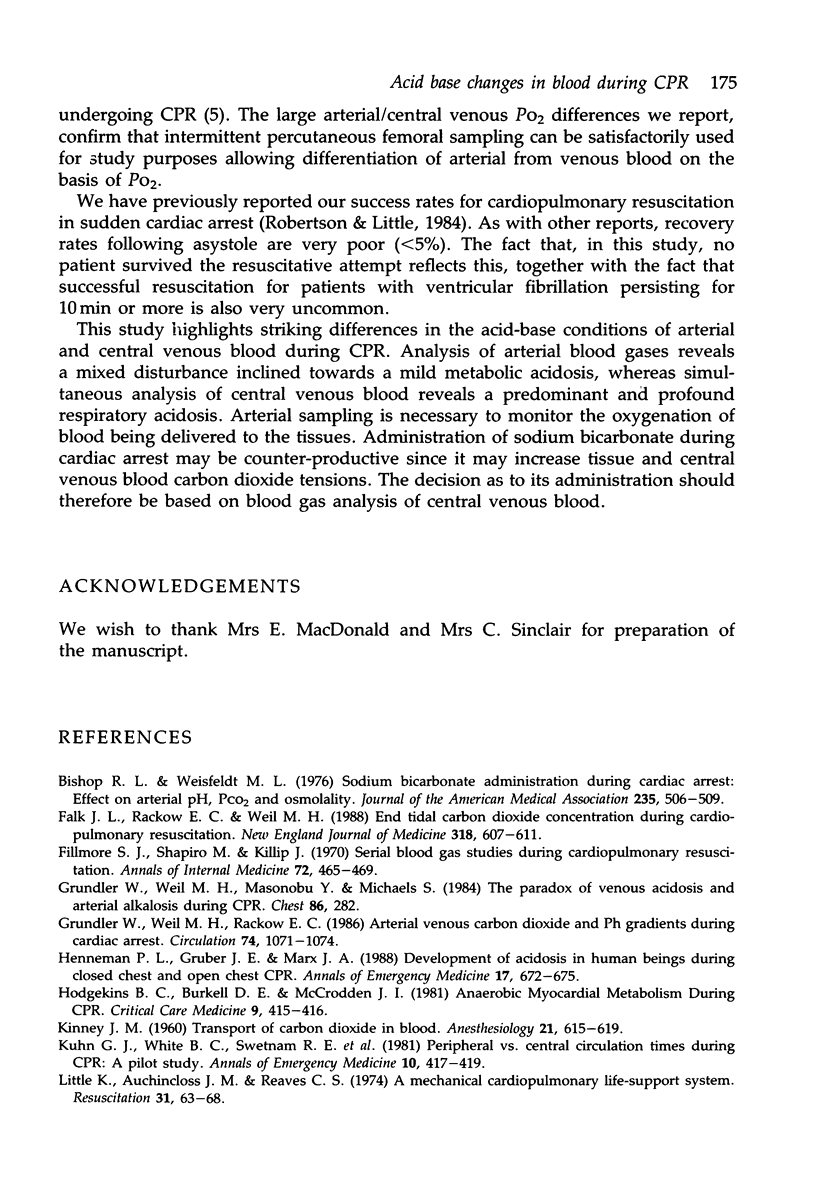
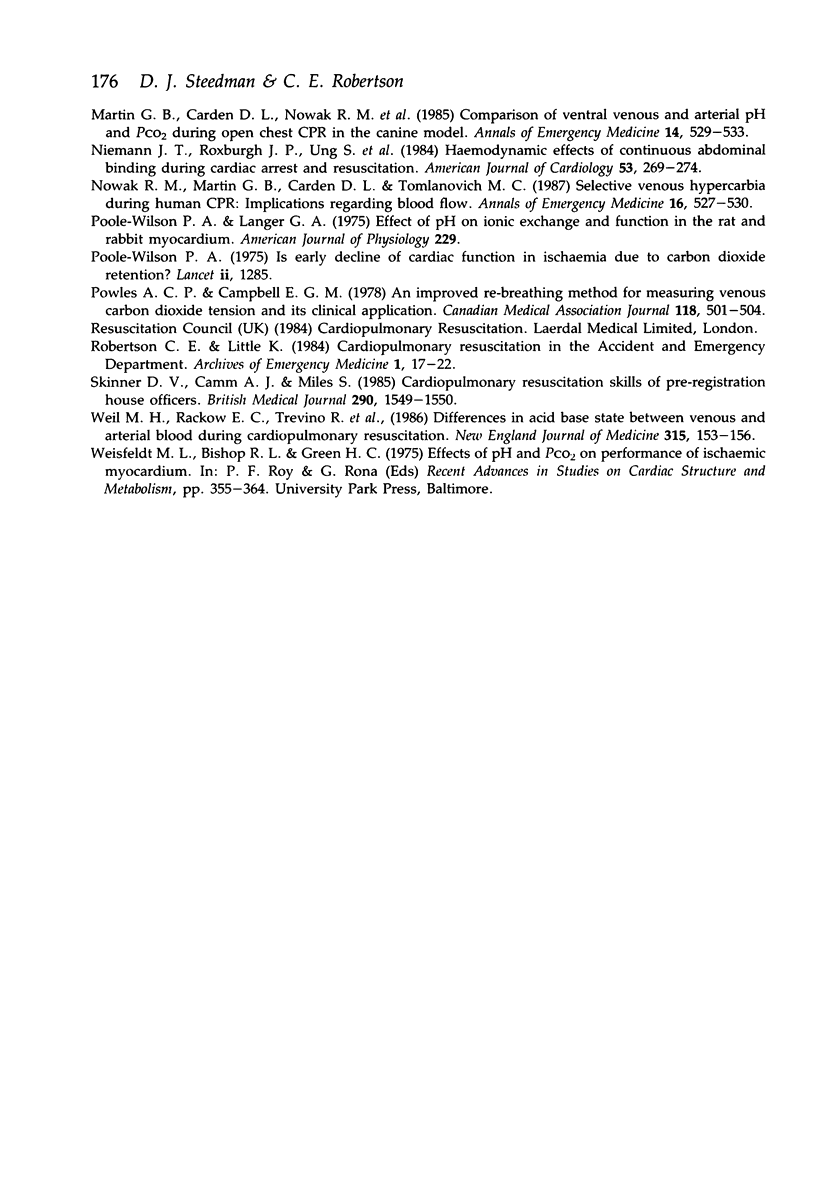
Selected References
These references are in PubMed. This may not be the complete list of references from this article.
- Bishop R. L., Weisfeldt M. L. Sodium bicarbonate administration during cardiac arrest. Effect on arterial pH PCO2, and osmolality. JAMA. 1976 Feb 2;235(5):506–509. [PubMed] [Google Scholar]
- Falk J. L., Rackow E. C., Weil M. H. End-tidal carbon dioxide concentration during cardiopulmonary resuscitation. N Engl J Med. 1988 Mar 10;318(10):607–611. doi: 10.1056/NEJM198803103181005. [DOI] [PubMed] [Google Scholar]
- Fillmore S. J., Shapiro M., Killip T. Serial blood gas studies during cardiopulmonary resuscitation. Ann Intern Med. 1970 Apr;72(4):465–469. doi: 10.7326/0003-4819-72-4-465. [DOI] [PubMed] [Google Scholar]
- Grundler W., Weil M. H., Rackow E. C. Arteriovenous carbon dioxide and pH gradients during cardiac arrest. Circulation. 1986 Nov;74(5):1071–1074. doi: 10.1161/01.cir.74.5.1071. [DOI] [PubMed] [Google Scholar]
- Henneman P. L., Gruber J. E., Marx J. A. Development of acidosis in human beings during closed-chest and open-chest CPR. Ann Emerg Med. 1988 Jul;17(7):672–675. doi: 10.1016/s0196-0644(88)80607-3. [DOI] [PubMed] [Google Scholar]
- Hodgkin B. C., Burkett D. E., McCrodden J. I. Anaerobic myocardial metabolism during CPR. Crit Care Med. 1981 May;9(5):415–416. doi: 10.1097/00003246-198105000-00032. [DOI] [PubMed] [Google Scholar]
- KINNEY J. M. Transport of carbon dioxide in blood. Anesthesiology. 1960 Nov-Dec;21:615–619. doi: 10.1097/00000542-196011000-00005. [DOI] [PubMed] [Google Scholar]
- Kuhn G. J., White B. C., Swetnam R. E., Mumey J. F., Rydesky M. F., Tintinalli J. E., Krome R. L., Hoehner P. J. Peripheral vs central circulation times during CPR: a pilot study. Ann Emerg Med. 1981 Aug;10(8):417–419. doi: 10.1016/s0196-0644(81)80308-3. [DOI] [PubMed] [Google Scholar]
- Little K., Auchincloss J. M., Reaves C. S. A mechanical cardiopulmonary life-support system. Resuscitation. 1974;3(1):63–68. doi: 10.1016/0300-9572(74)90028-8. [DOI] [PubMed] [Google Scholar]
- Martin G. B., Carden D. L., Nowak R. M., Tomlanovich M. C. Comparison of central venous and arterial pH and PCO2 during open-chest CPR in the canine model. Ann Emerg Med. 1985 Jun;14(6):529–533. doi: 10.1016/s0196-0644(85)80775-7. [DOI] [PubMed] [Google Scholar]
- Niemann J. T., Rosborough J. P., Ung S., Criley J. M. Hemodynamic effects of continuous abdominal binding during cardiac arrest and resuscitation. Am J Cardiol. 1984 Jan 15;53(2):269–274. doi: 10.1016/0002-9149(84)90438-7. [DOI] [PubMed] [Google Scholar]
- Nowak R. M., Martin G. B., Carden D. L., Tomlanovich M. C. Selective venous hypercarbia during human CPR: implications regarding blood flow. Ann Emerg Med. 1987 May;16(5):527–530. doi: 10.1016/s0196-0644(87)80677-7. [DOI] [PubMed] [Google Scholar]
- Poole-Wilson P. A. Is early decline of cardiac function in ischaemia due to carbon-dioxide retention? Lancet. 1975 Dec 27;2(7948):1285–1287. doi: 10.1016/s0140-6736(75)90616-9. [DOI] [PubMed] [Google Scholar]
- Powles A. C., Campbell E. J. An improved rebreathing method for measuring mixed venous carbon dioxide tension and its clinical application. Can Med Assoc J. 1978 Mar 4;118(5):501-4,552. [PMC free article] [PubMed] [Google Scholar]
- Robertson C. E., Little K. Cardiopulmonary resuscitation in the accident and emergency department. Arch Emerg Med. 1984 Mar;1(1):17–22. doi: 10.1136/emj.1.1.17. [DOI] [PMC free article] [PubMed] [Google Scholar]
- Skinner D. V., Camm A. J., Miles S. Cardiopulmonary resuscitation skills of preregistration house officers. Br Med J (Clin Res Ed) 1985 May 25;290(6481):1549–1550. doi: 10.1136/bmj.290.6481.1549. [DOI] [PMC free article] [PubMed] [Google Scholar]
- Weil M. H., Rackow E. C., Trevino R., Grundler W., Falk J. L., Griffel M. I. Difference in acid-base state between venous and arterial blood during cardiopulmonary resuscitation. N Engl J Med. 1986 Jul 17;315(3):153–156. doi: 10.1056/NEJM198607173150303. [DOI] [PubMed] [Google Scholar]
- Weisfeldt M. L., Bishop R. L., Greene H. L. Effects of pH and pCO2 on performance of ischemic myocardium. Recent Adv Stud Cardiac Struct Metab. 1975;10:355–364. [PubMed] [Google Scholar]


